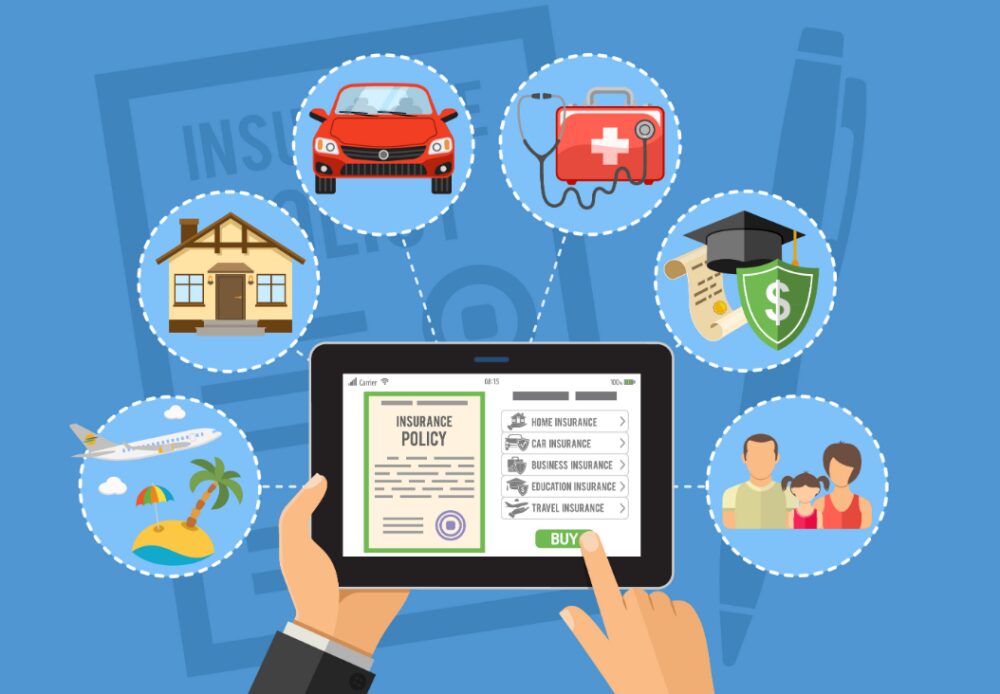Why Insurers Need to Tailor Their Communication?
Covid-19 was a wake-up call for insurers. With InsurTechs’, short for insurance technology, disruptive innovations on the one side and a pandemic situation on the other, insurers need to come up with a plan to secure existing customers and win new ones. A good option for incumbent insuring businesses is to tailor their communication more efficiently because the insurer-client interaction has transformed dramatically.
From my experience working in a bespoke software development company – Dreamix, I have the chance to observe how important technology is for modern businesses and individuals. Let’s admit it: people increasingly function digitally. This means that they are accustomed to and thus expect convenience, high-speed services and new exciting possibilities that contribute to an easy life. If insurance as a traditional legacy business fails to grasp that, InsurTech can come to offer a handful of personalized approaches that are more attractive for customers.
- Right Channel and Message
The way to appeal to clients in the digital era when everyone else is also fighting for their attention is to target the right audience, at the right time, on the right channel. With cloud-computing and artificial intelligence (AI) as power tools in their repository, InsurTechs can create customized communication strategies to reach customers in the digital environment, where they spend a lot of time.
Even though AI has tremendous potential, hopefully, it will never substitute human intelligence entirely. It is critical that a human being is involved in helping personalize different messages. As an insurer, think from a client-centric position and help them choose the best insurance product. Cutting the deal comes naturally when you’ve gained clients’ trust in your brand’s image.
- Improved Customer Service

Did you know that on average post auto accident insurance means that applicants have five to seven touchpoints with the insurer before the claim is finalized? On top of that, a client may speak to several different organizational silos and explain the same thing repeatedly.
Even if insurance companies have top products, if they offer bad and clumsy customer service, one can effortlessly imagine clients’ satisfaction rates there. InsurTechs drastically reduce claim processing time and as an outcome, create an improved positive customer experience which is absolutely vital for any ambitious business.
On top of that, front-line employees such as personal brokers are available for questions and advice within a click away. In the long run, nothing pays off more than clients’ satisfaction, who then share their experience and recommend particular products to friends and relatives.
- Higher Conversion and Retention
From a client’s perspective, it is easy to simply ignore a message that is far from your unique preferences. Here, AI can step in to significantly ease the task of actually being noticed online. By real-time observations of clients’ behavior, AI’s valuable insights contribute to more engagement and meaningful interactions, which is a good conversion strategy.
From a business perspective, it is always cheaper to retain existing customers rather than focus your efforts on winning new ones. In fact, many business models concentrate their efforts on retention. A higher conversion rate is achieved through personalization and attention to the client’s needs.
Insurers should keep an eye open for ways to make good deals for their existing customers, then take the initiative and make a direct approach. This is the delight phase of customer experience which promises higher retention rates.
How InsurTech Affects Communication?

1. Easier Direct Messages
Whoever wants to succeed in the digital era as a business needs to have both a high-quality online presence and seamless customer services. InsurTech’s approach revolves around cutting-edge technology that matches clients’ expectations and ever-evolving needs.
You most probably know of chatbots, relatively simple but useful business tools pre-programmed for limited functionality. A more elaborate next generation of instant messaging for InsurTech communication is called conversational interface (CI). Besides serving as a communication tool, CI has many other multi-purpose options such as data sharing, virtual assistants and video conferencing.
2. Negotiating and Choosing a Plan Remotely
Investopedia states that InsurTech offers “ultra-customized policies, social insurance, and using new streams of data from Internet-enabled devices to dynamically price premiums according to observed behavior”. All this from the comfort of your home, online and within minutes.
For InsurTechs, a big part of being innovation-driven means transforming time-consuming, old-fashioned ways to get things done. Now, the negotiating procedures can be done entirely online through live videos between broker and client and choosing a tailored plan has never been easier. If customers have their personal broker a few clicks away, fully devoted to their customized insurance plan, life gets a lot more convenient.
3. Secure Exchange of Documents and Data

I guess we can all understand the aspect of security within information exchange. Data breaches, be it intentional or unintentional are a worst-case scenario no business wants and can allow themselves to be involved in. When choosing an insurance company, clients need to know how their valuable personal data will be treated.
The three main challenges ahead of InsurTech companies are industry regulations, data privacy, and personal data security. To face them right is of utmost importance for InsurTechs as new players to create a trustworthy brand image and live up to the expectations they have created for themselves.
4. Flexibility
Being customer-centric and paying attention to the individual needs while offering paramount flexibility is what InsurTechs have on their agenda.
Take the small and medium-sized enterprises (SMEs), for instance (about 99% of firms). With the advantages of digitization, a higher risk of vulnerability, such as data breaches and ransomware threats, is also present. Increased risks and working in uncertain times, such as the current pandemic may lead SMEs to wish for more flexible insurance solutions.
While many traditional insurance policies require at least a year-long commitment, SMEs might find a better fit among the more flexible options offered by InsurTechs. With their personalized solutions matching each element of a modern business better, they are on their way to set up new flexibility standards.
5. AI and Automation

With powerful cloud-computing and artificial intelligence (AI) as power tools in their repository, InsurTechs can offer direct messages, live videos, virtual assistance used to improve communication even in this highly complex health crisis. InsurTechs startups also use automation processes to take control of underwriting, assemble and analyse data, and look for human-made errors by underwriters.
As an insurer, pay attention to the data AI provides you. When you can offer your clients a more suitable insurance product, approach them with good intentions and make an offer. AI and automation may be the next big thing, but a personal touch with time-relevant information must be attained in order to keep the human connection with the insurance client alive.
Author Biography Aleksandrina Vasileva
Aleksandrina is a Content Creator at Dreamix, a custom software development company, and is keen on innovative technological solutions with a positive impact on our world. Her teaching background, mixed with interests in psychology, drives her to share knowledge. She is an avid reader and an enthusiastic blogger, always looking for the next inspiration.





